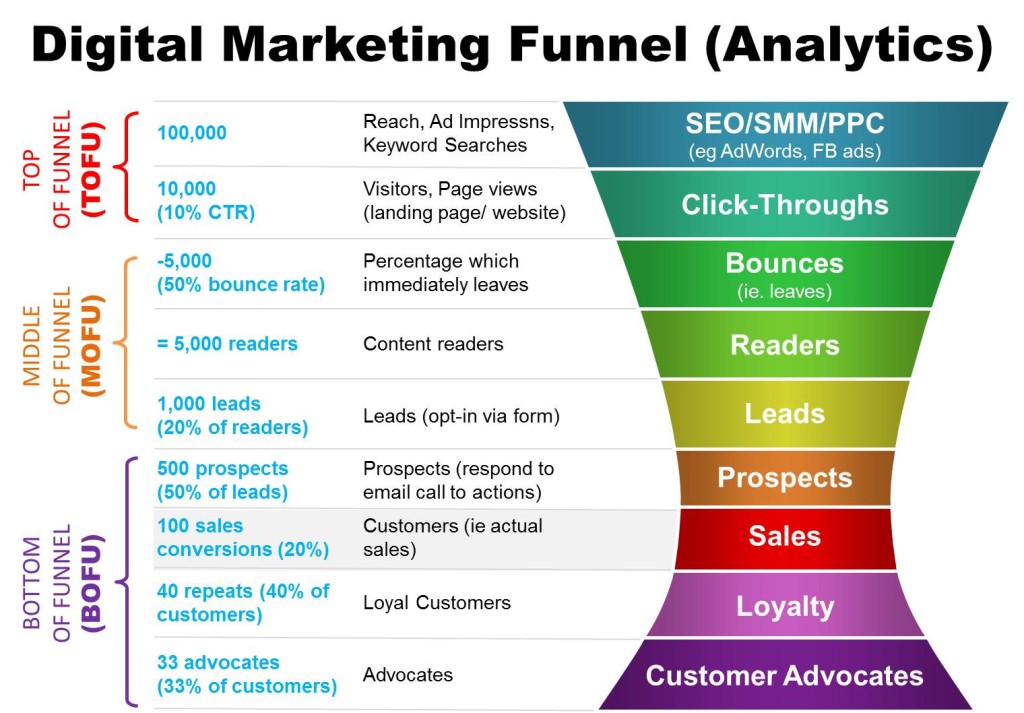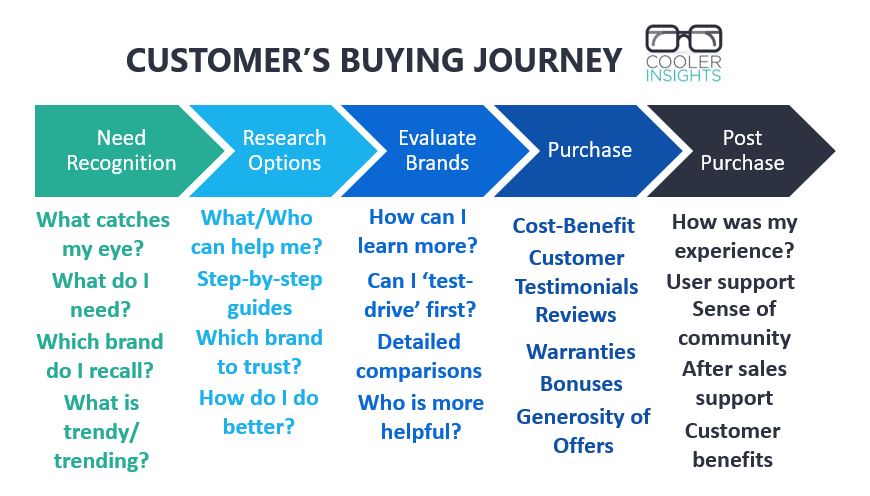
Hand photo created by jcomp – www.freepik.com
Digital marketing isn’t a silver bullet. Often, digital marketing is fraught with difficulties and problems.
63 percent of marketers find it a challenge to generate traffic and leads, 60 percent of marketers struggle with producing content, while only 3 percent of adults trust social media!
But that’s just the tip of the internet marketing challenge iceberg. Often, the main problems which digital marketers face in pay-per-click (PPC) advertising, content marketing, Search Engine Optimization (SEO), social media marketing, or other digital marketing strategies are more fundamental.
From my experience working with over 70 client organisations and more than 4,100 trainees, I observed that most online marketing failures stem from one or more of the following errors:
- Mismatched client-agency expectations
- Traditional marketing mindset
- Lack of long term thinking
- Immediate sales focus
- Inability to derive ROI
- Insufficient investment
- Piecemeal marketing strategies
- Lack of expertise
To avoid these mistakes, it is useful to examine what each of them are in detail.
#1 Misguided Client-Agency Expectations
One of the most common problems in digital marketing is one of misplaced enthusiasm.
Enchanted by the promises of digital marketing “gurus,” who claim that they can multiply your company’s revenue through Facebook ads (or other miracle digital marketing strategies), marketers expect their digital marketing efforts to yield huge sales from the word “Go!”
They expect that spending a paltry sum with a low-cost agency plus some quick “hacks” can get them instant fame and fortune.
Another common mistake is hiring an agency to copy what others do—sometimes even word-for-word and image-for-image—and expecting that they’ll get the same outcome.
Solution: Work with Trustworthy Partners
To get your digital marketing efforts off to a positive start, ensure that you choose the right agency to work with.
Screen through their past experience and track records. Ask for their credentials. Get a sense of whether they are familiar with the different digital marketing channels that are out there, and how these can be used.
Before you commence, it is also good to draft a detailed digital marketing brief to align expectations on both the client and agency side.
#2 Traditional Marketing Mindset
Many marketers transfer their traditional thinking on marketing communications to the digital world.
They perceive that digital marketing campaigns must have “Big Ideas” with hero creatives that are consistently applied across multiple channels. They focus their attention on the cleverness of their copy and the beauty of their photos or videos. They start with a television or newspaper ad, and then try to force-feed that creative and copy into a tiny digital banner.
The problem with such thinking is that the characteristics of digital marketing channels become an afterthought. Trying to make a newspaper or magazine ad work well on Instagram, Google Display Ad or email often results in ads that people will avoid due to banner blindness.
Solution: Consider Digital Channels First
To prevent these challenges, consider your digital channels first. Make your campaigns ideas and stories that your audience would want to consume.
Make it apparent what they’re going to get (attention spans on digital channels are much shorter than offline channels), and make it easy to grasp your value proposition at a glance.
#3 Short-Term Thinking
Building a digital brand is a long-term endeavour. You can’t just expect to turn on and turn off the tap as and when you need more customers or more sales.
Short-term (or even immediate-term) thinking has resulted in many brands squandering their opportunities to build online relationships. Focused on going viral or driving high-volume of sales, they ignore the importance of building and nurturing their customer relationships.
Solution: Build Your Community
To rectify this, consider the long-term benefits of building your online brand community. Don’t just consider a campaign as “once-and-done” but use every opportunity to nurture your prospects and customers through the funnel.
This entails implementing customer loyalty strategies that looks at caring for your customer long after the sales is made—and definitely long before that too.
#4 Immediate Sales Focus
Impatience is the enemy of digital marketing. Especially when it is pegged to aggressive sales numbers.
Now look, there isn’t anything wrong with selling. In fact, digital marketers that are unable to sell stuff will soon go out of business—or look for a new job.
Digital marketing is a long-game which requires multiple points of contact—as much as 8 to 10 touch-points over a 4 to 6 month period—before a potential customer will hit the “Buy Now” button.
Solution: Nurture Leads and Retarget/ Remarket

As any savvy digital marketer will tell you, the process of conversion is often long-drawn online. Typically, a prospect may do any of the following:
- Do a Google research on his problem to look for solutions
- Poll Facebook friends to ask for recommendations
- Read online reviews of different products and services
- Watch YouTube videos on product reviews
- Click on a few brands’ websites to see what they have to offer
- Read their email
In the midst of all this activity, the brand which wins would probably be the one that is able to make an impression through all these channels. This should look at establishing a brand presence on these channels, as well as in adopting remarketing or retargeting advertising strategies to get your brand back in their minds.
#5 Inability to Track Return On Investment (ROI)
Yet another challenge often cited is the inability to track digital marketing ROI. Marketers are often stymied by their CFOs when asked about the revenue which their digital marketing efforts bring to the table.
This can often be attributed to several factors:
- Lack of a systematic process of budgeting and calculating their digital marketing results
- Lack of understanding of digital marketing analytics
- Failure to map out your digital marketing funnel
- Excessive focus on vanity metrics—views, likes, comments and shares
- Adopting the wrong strategies for digital marketing campaigns
Solution: Match Goals, KPIs, Channels and Content Types

To get a better grasp of your digital marketing ROI (social or otherwise), consider your campaign goals and how it can be tracked across the entire funnel. Work out your intermediate KPIs such as the following:
- Awareness (Top Of Funnel): Impressions, Reach, Video Views, CPM, CPR, etc
- Consideration (Middle Of Funnel): Clicks, Engagements, Page Views, Cost Per Click, Cost Per Lead, etc
- Conversion (Bottom Of Funnel): Leads generated, Cost Per Lead, Sales, Cost Per Sales, etc
- Loyalty (Bottom Of Funnel): Customer lifetime value, Repeat Customers, Shares/Retweets, Referrals, etc
#6 Low Branding Awareness and Affinity
The good thing about digital marketing is that its relatively cheap to do anything online.
The bad thing about digital marketing? Its low barriers to entry attracts a lot of scam artists.
In such an environment, consumers and corporate executives will skew towards trusted brands. These are usually the bigger companies which have an established online presence. Often, they’ll have a well-designed website, official social media accounts, and online video channels.
Solution: Build Your Brand Trust and Likability
Like any other marketing channel, online platforms work better with trusted, likable and known brands. Merely launching a huge promotion or discount off your normal priced product alone wouldn’t work.
You need to build your online brand by taking pains to carefully describe what your brand is about. Provide useful information that prospects would value.
Explain in detail how your product or service can solve customer pain points. Narrate your brand story, tell people what your brand is all about, and why it matters.
#7 Insufficient Marketing Investment
Scrimping and saving is a virtue in the bootstrapped world of digital entrepreneurship. However, spending too little may also stymie your digital marketing efforts.
As more and more companies go online, depending on organic traffic alone isn’t going to be enough. You’ll need to supplement it with ads—Google Ads, Facebook Ads, LinkedIn Ads, and native sponsored posts.
These will help you to amplify your efforts and get sufficient volume through the different stages of your marketing funnel to generate a return.
Solution: Spend More!
OK, I’m not just asking you to pump in millions of dollars in Facebook and Google ads. Rather, consider setting aside a certain percentage of your incremental sales in digital marketing efforts like content creation, landing page development, and ad spend.
A good way to minimize your risks in this area is to switch a percentage of your marketing budgets from non-digital channels to digital ones. This could give you a good sense of whether it works (or not), and how much your ROI could be if you pump in more funds to digital channels.
#8 Piecemeal Marketing Strategies
One of the greatest mistakes you could make is to hedge all your bets on a single platform.
Perhaps you’ll put all your ammo in Facebook. Or depend purely on your Google Ads to drive leads. Or maybe you’ll focus on crafting and refining your emails, optimizing them to improve open-rates and click rates.
The result is a rather piecemeal approach to digital marketing—one that may not be sustainable over the long haul.
Solution: Map out Your Customer’s Buying Journey

Focusing on just one step of your customer’s touch-point with your brand isn’t enough. You’ll need to examine your entire customer buying journey, consider the best channels to influence them on each step, and what message your should convey there.
You can use an app like Funnelytics.io to draw out the steps in their journey, and to develop the appropriate goals, Call To Actions (CTAs) and visuals for the different campaign pieces. This will make your digital campaigns more systematic and cohesive.
#9 Lack of Digital Marketing Expertise
Finally, and perhaps most important of all, is digital marketing expertise. (Or perhaps the lack of it.)
You don’t have to be an expert in all the different arms of digital marketing. Even agency leaders and bosses like myself aren’t au fait with every aspect of the digital marketing game.
However, you need to know enough of each digital marketing discipline to be able to manage that function effectively.
Solution: Sign Up for Training
With so many courses to choose from, and an equally bewildering number of training providers, you really have no excuse not to be trained.
If you’re wondering where you should start, consider Equinet Academy. Many of their courses are certified and funded by WSG, and they’re led by qualified and experienced trainers. Like (err hmm) me!
Conclusion
What I’ve covered are just some of the major mistakes and problems that befall marketers who practice digital marketing. I’m sure there are many other challenges and failures which you’re aware of.
Hopefully, you’ll find these insights useful should you ever encounter one (or more) of these challenges in your own marketing practice.

The discussion you have about top digital marketing
and solutions has been really great. Thank you very much
Awesome Blog. Thanks for writing to us . Keep doing it.
We love to read this kind of Blog.